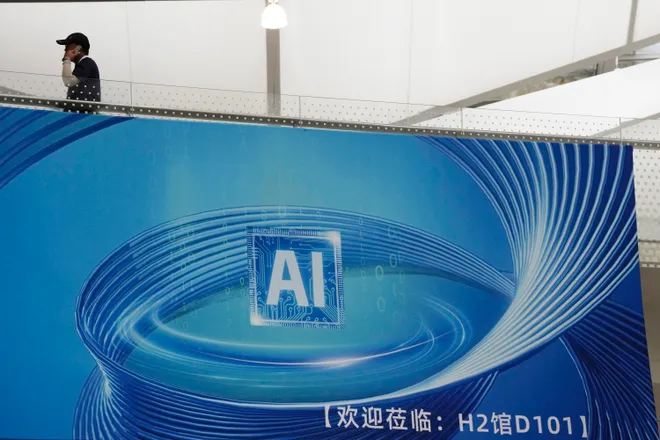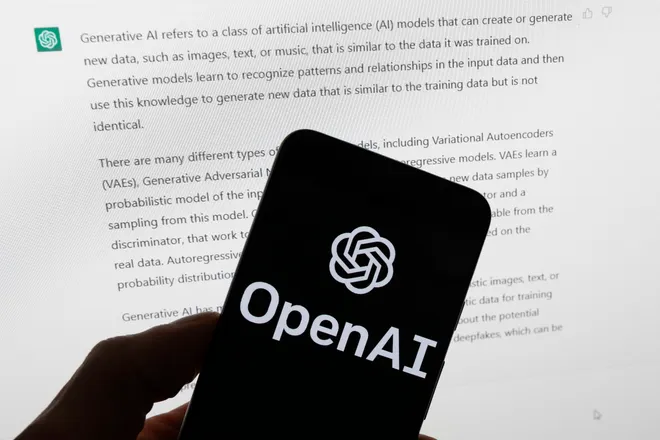What jobs are most exposed to AI? Pew research reveals tasks more likely to be replaced.
About one-in-five U.S. workers have jobs with key tasks that are more likely to be aided or replaced by AI, according to a recent report from Pew Research Center.
The findings, based on an analysis of federal data, found that jobs that rely on analytical skills like critical thinking, writing, science and math tend to be "more exposed" to the emerging technology. Interestingly, workers in industries more exposed to AI are more likely to say they think it will help rather than hurt their jobs, according to a Pew survey.
"Workers who are more familiar with AI seem to be seeing more benefits than harm," said Rakesh Kochhar, a senior researcher at the nonpartisan think tank who authored the report.
The report noted that it’s unclear how many jobs are at risk due to AI, although some findings suggest jobs are already being lost to the technology. AI contributed to nearly 4,000 job cuts in May, according to a report from Challenger, Gray & Christmas.

Which jobs are most at-risk due to AI?
U.S. jobs likely to have high, medium and low exposure to AI include:
High exposure:
- Budget analysts
- Data entry keyers
- Tax preparers
- Technical writers
- Web developers
Medium exposure:
- Chief executives
- Veterinarians
- Interior designers
- Fundraisers
- Sales managers
Low exposure:
- Barbers
- Child care workers
- Dishwashers
- Firefighters
- Pipelayers
In sum, about 19% of U.S. workers were in jobs most exposed to AI last year, while an even greater share (23%) had jobs considered least exposed.
It's not clear how many jobs will be displaced by AI. A March report from Goldman Sachs found AI could substitute up to 25% of current work, with about two-thirds of jobs exposed to "some degree" of automation.
But researchers note that displacements following the emergence of new technology have typically been offset by the creation of new jobs, with census data suggesting that about 60% of workers today are employed in jobs that didn't exist in 1940.
Which employees are most at risk?
Pew found that women, Asian, college-educated and higher-paid workers are more exposed to AI.
Kochhar said this is because of the types of jobs held by different demographics: men tend to hold more jobs requiring physical labor like construction, for instance.
"So at the moment, they have less exposure to AI," Kochhar said. "Which is not to say AI could not lead to smarter robots that can do it all, also. That's not something we looked into."
According to the report:
- Workers with a bachelor’s degree (27%) are more likely than those with only a high school diploma (12%) to hold a job with the most exposure to AI.
- Women (21%) are more likely than men (17%) to have jobs with the most exposure to AI.
- Black (15%) and Hispanic (13%) workers are less exposed than Asian (24%) and white (20%) workers.
- Workers in the most exposed jobs last year earned $33 per hour on average, while jobs with the least amount of exposure earned $20 per hour.

Despite warnings from AI company executives that the technology will take away jobs, many workers – especially those with jobs considered highly exposed to AI – are optimistic about AI's impact.
- Thirty-two percent of information and technology workers ‒ who work in an industry that is considered more exposed to AI ‒ say the technology will help more than hurt them compared with 11% who believe the opposite.
- Meanwhile, 14% of workers in hospitality, services and arts – a “less exposed” industry – think AI will help more than hurt. A greater share (17%) believe it's more likely to hurt them.
"Where AI has penetrated at the moment, workers are finding it being more useful than hurtful or businesses are applying in what that is benefiting workers as opposed to replacing workers," Kochhar said.
Overall, 16% of U.S. adults said they think AI will help more than hurt, while 15% said they thought it would hurt more than help. Thirty percent say it will help and hurt equally, and 32% said they were unsure.
Disclaimer: The copyright of this article belongs to the original author. Reposting this article is solely for the purpose of information dissemination and does not constitute any investment advice. If there is any infringement, please contact us immediately. We will make corrections or deletions as necessary. Thank you.







